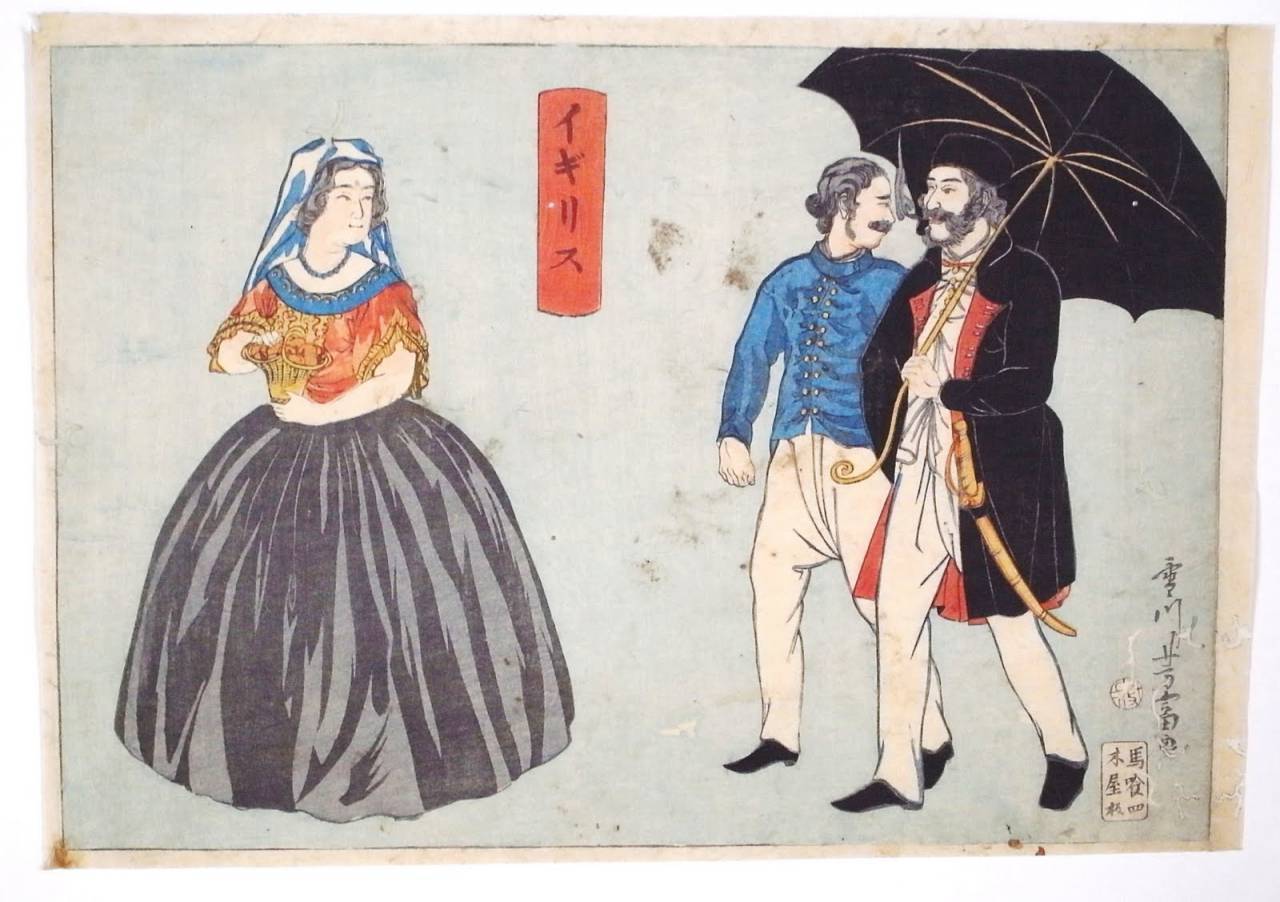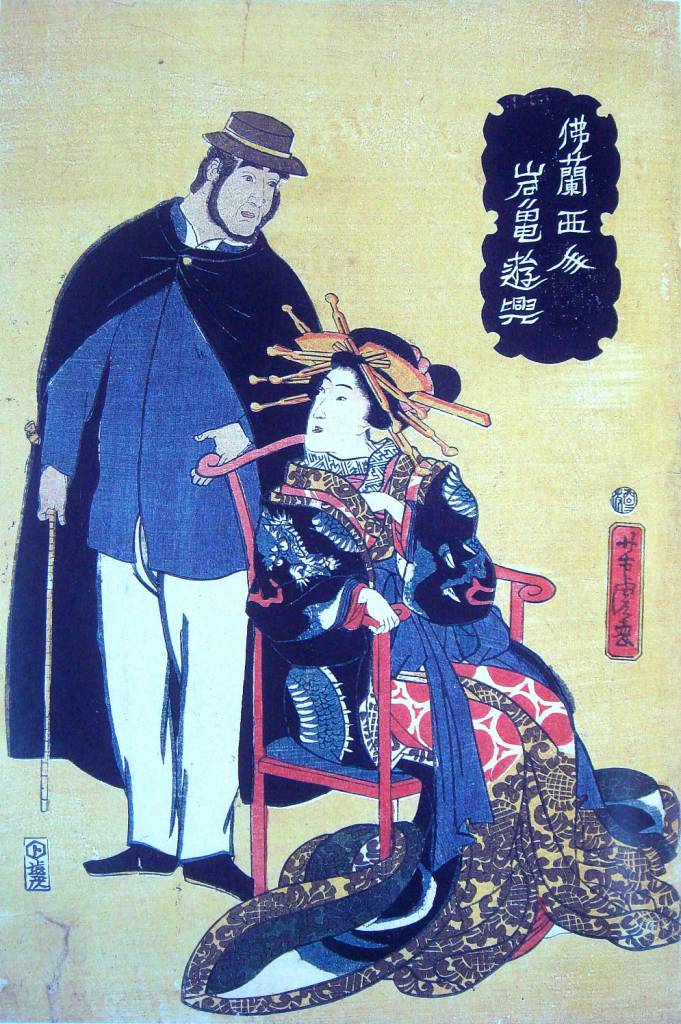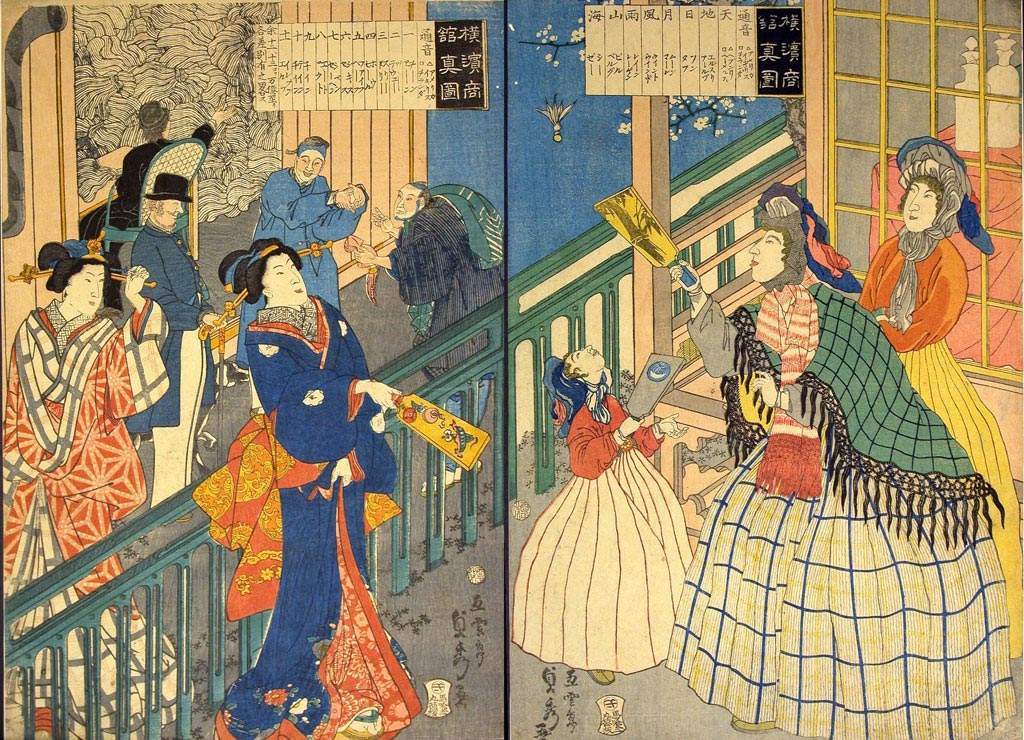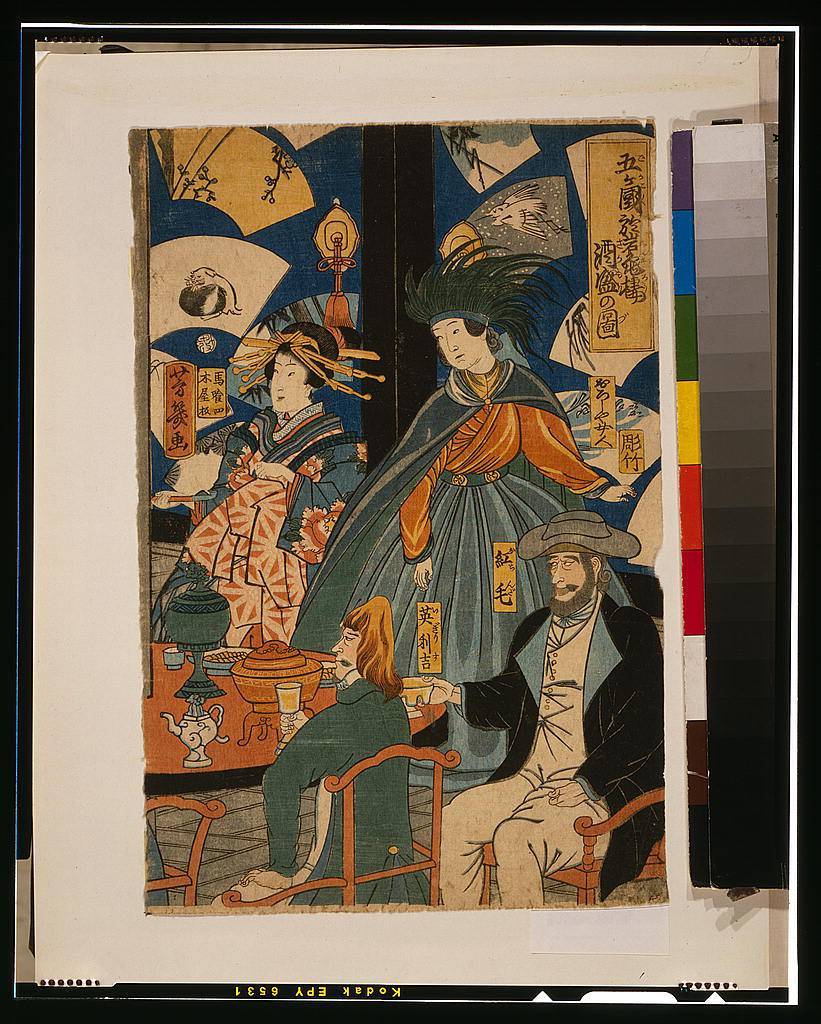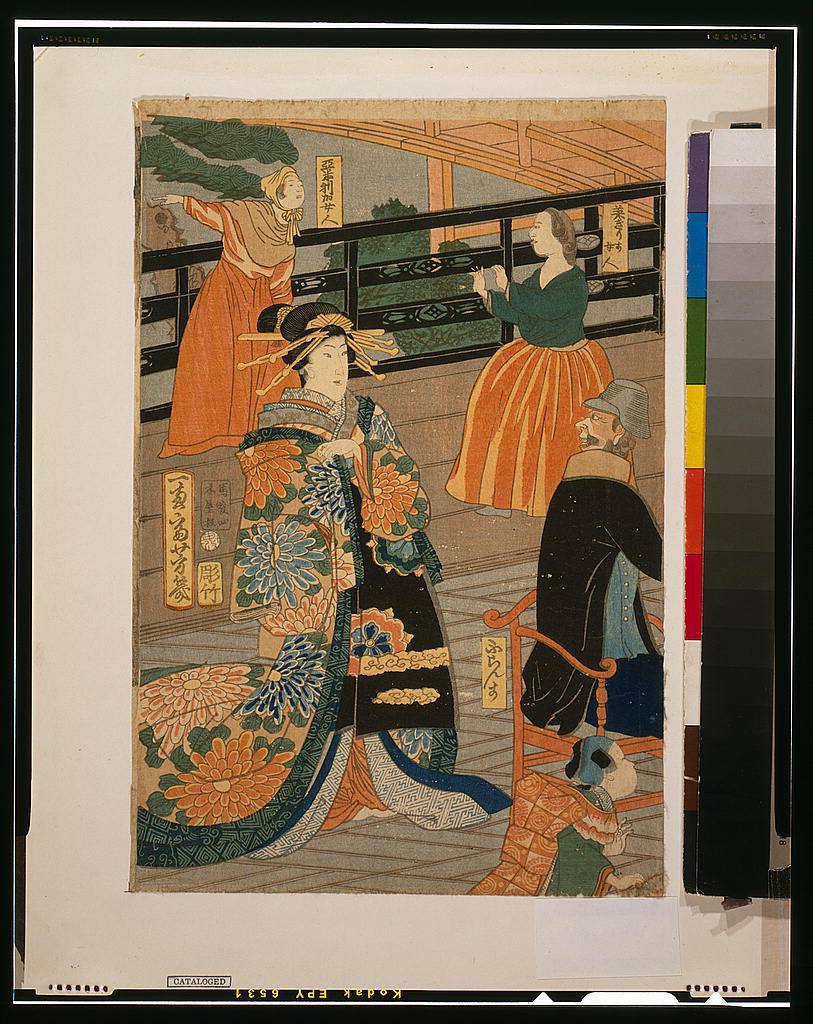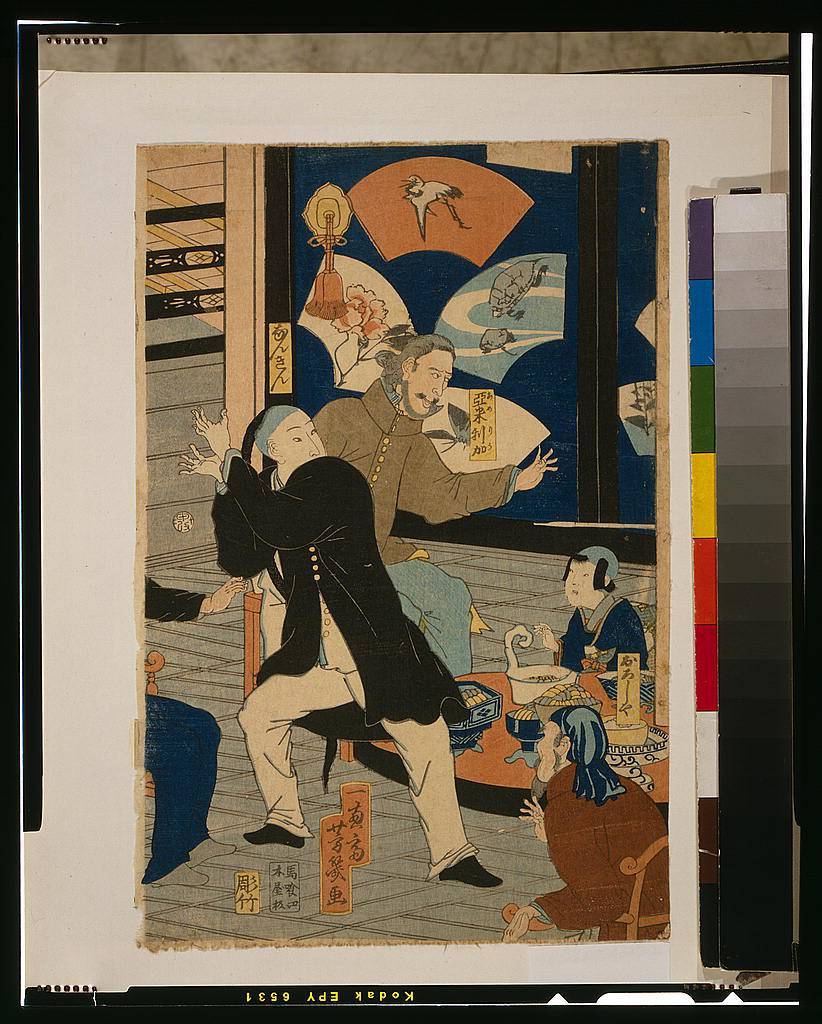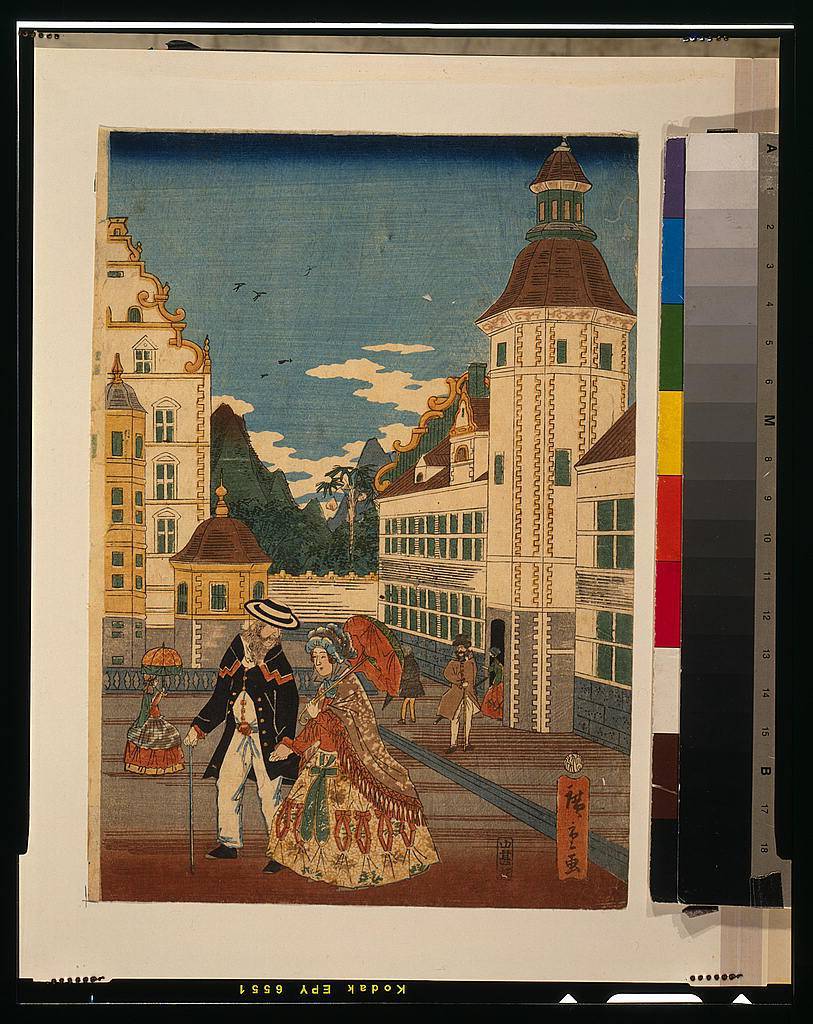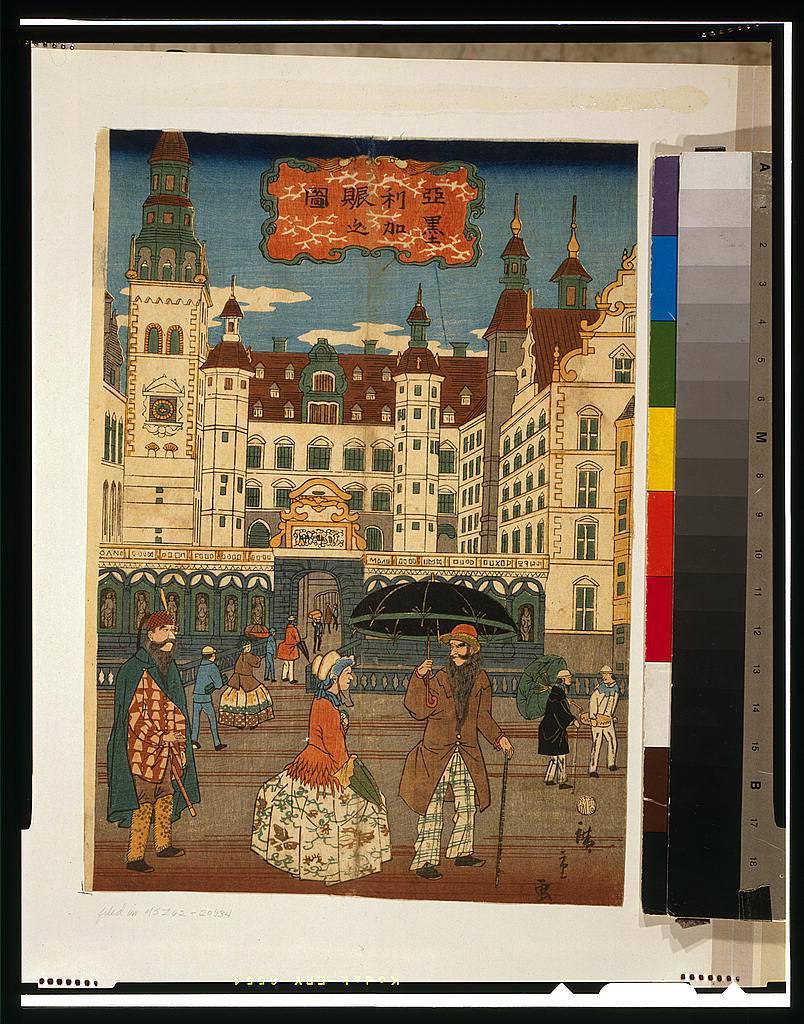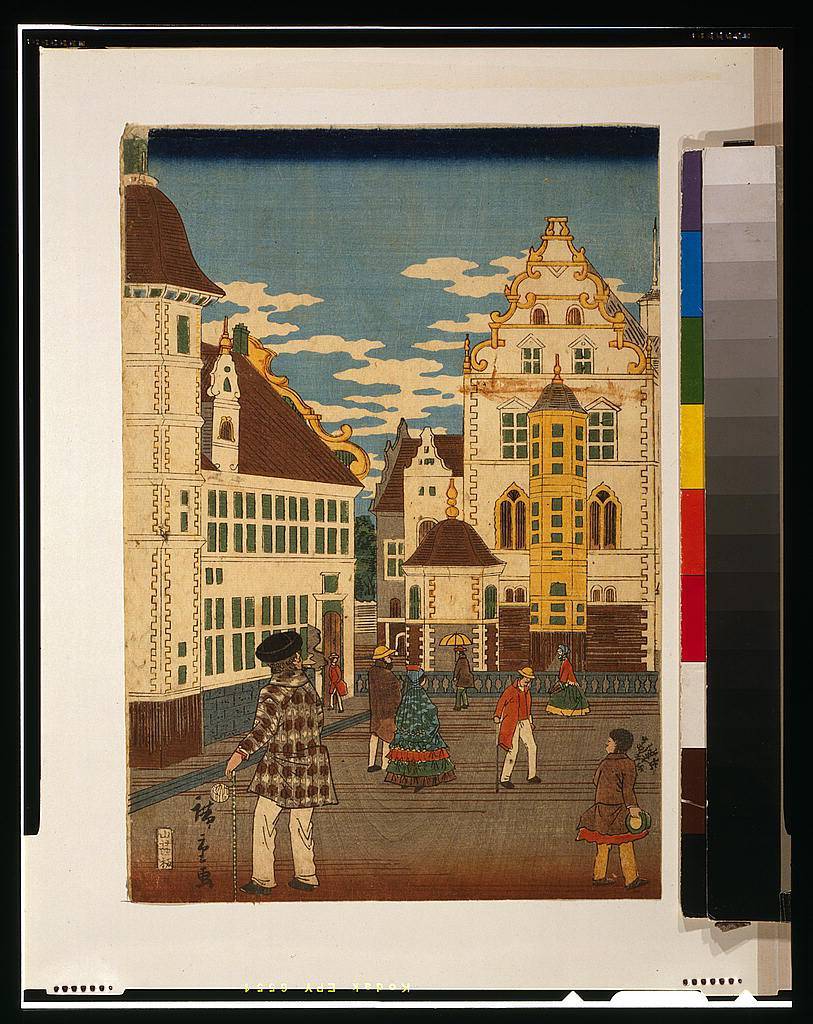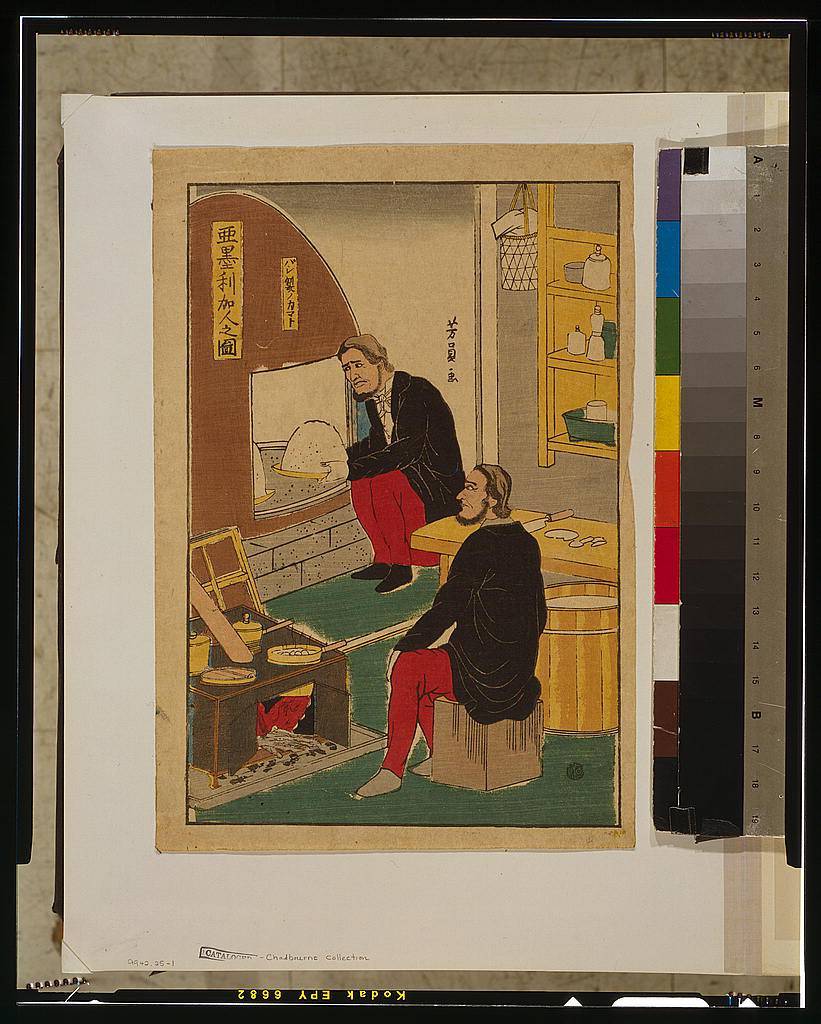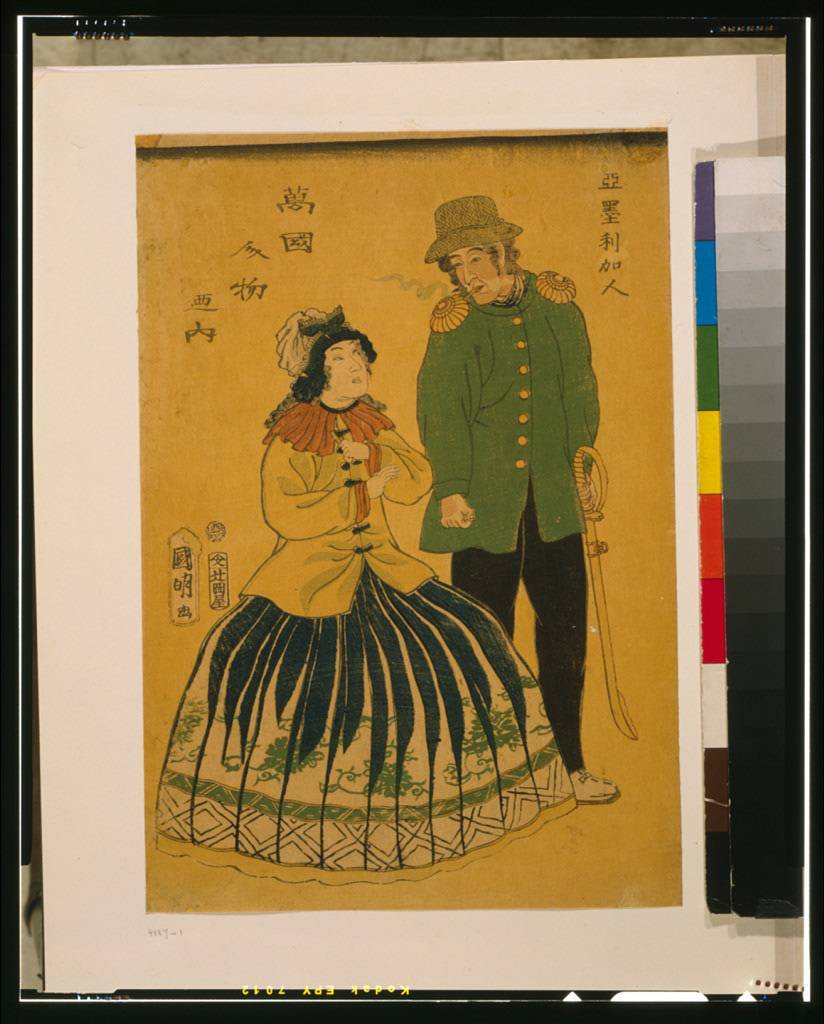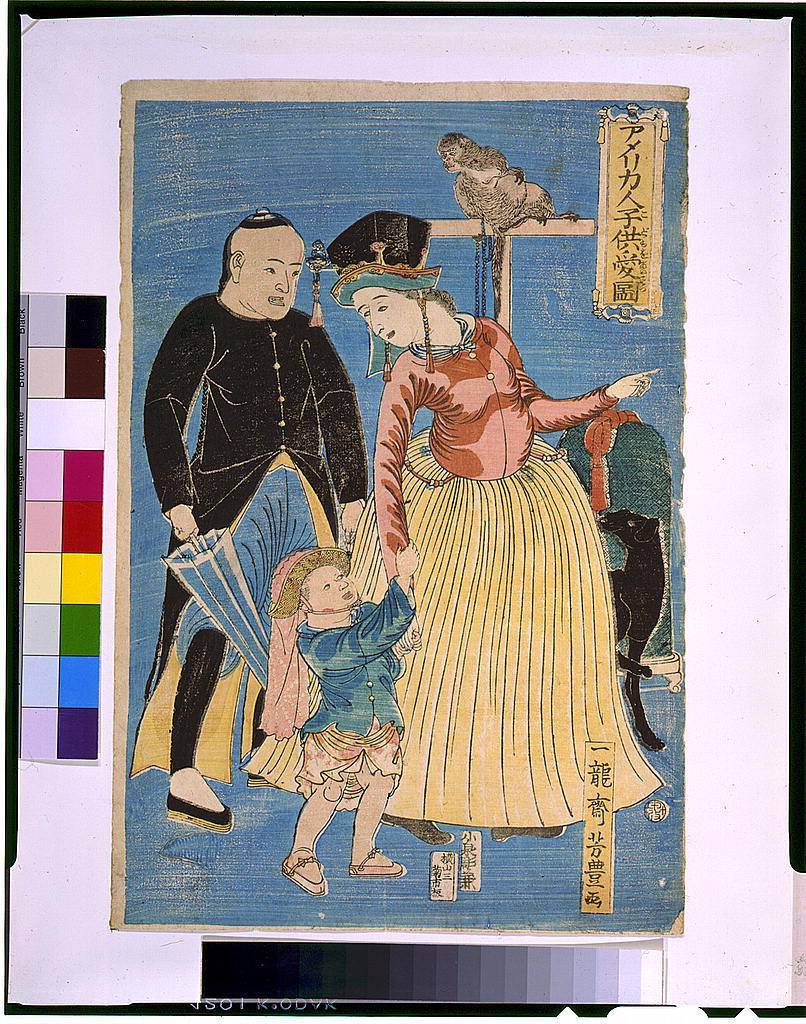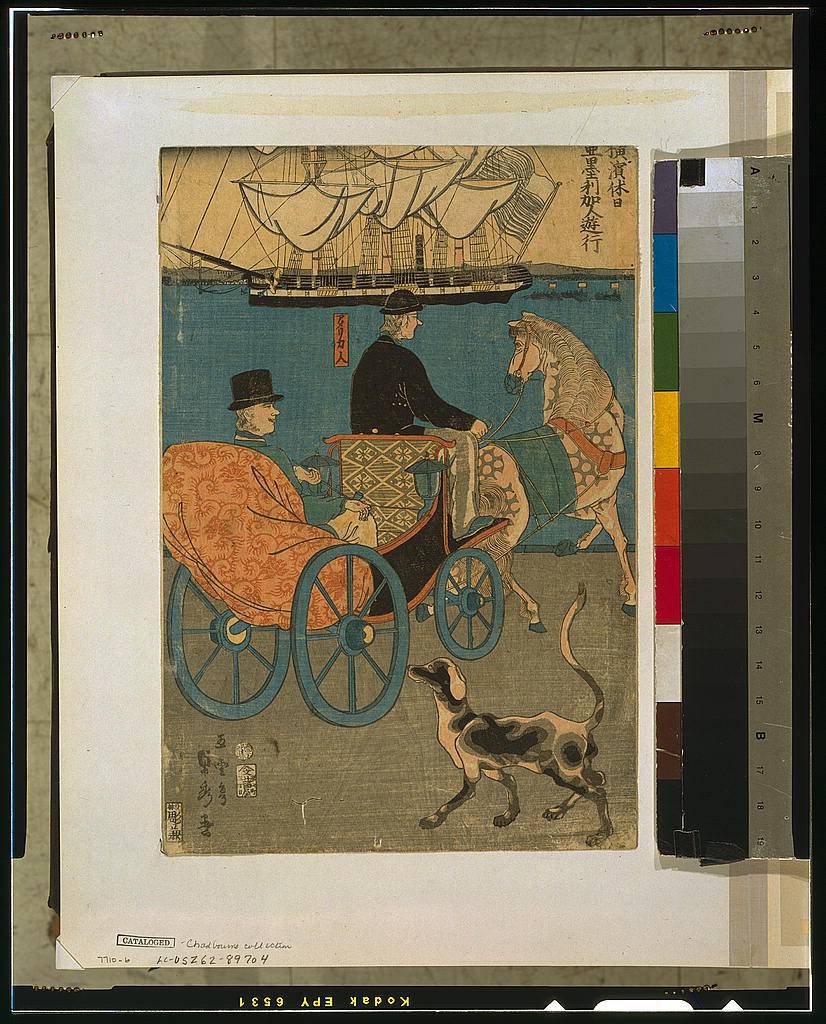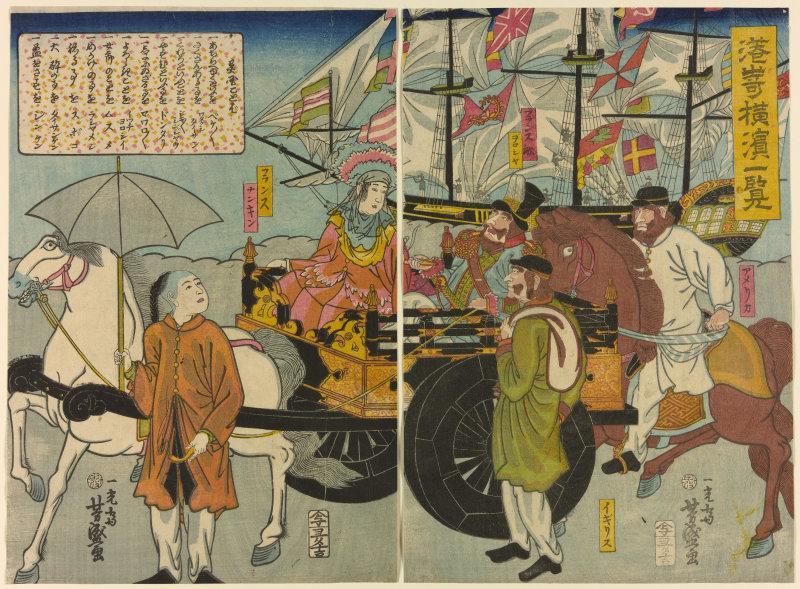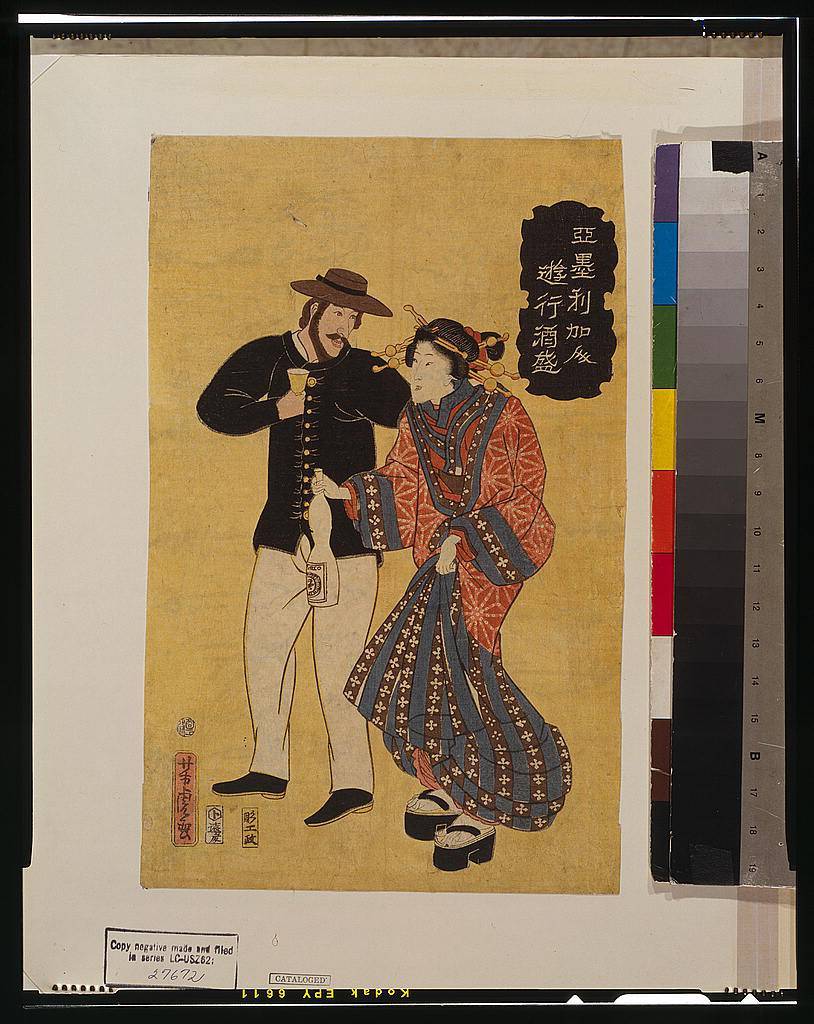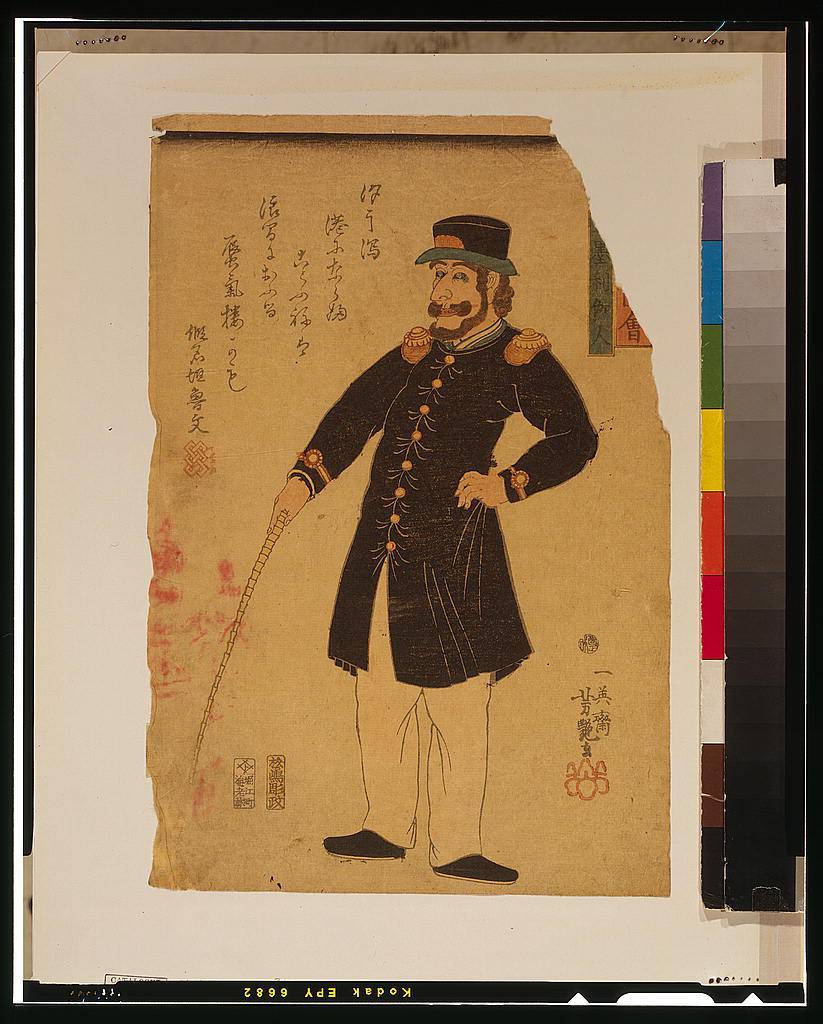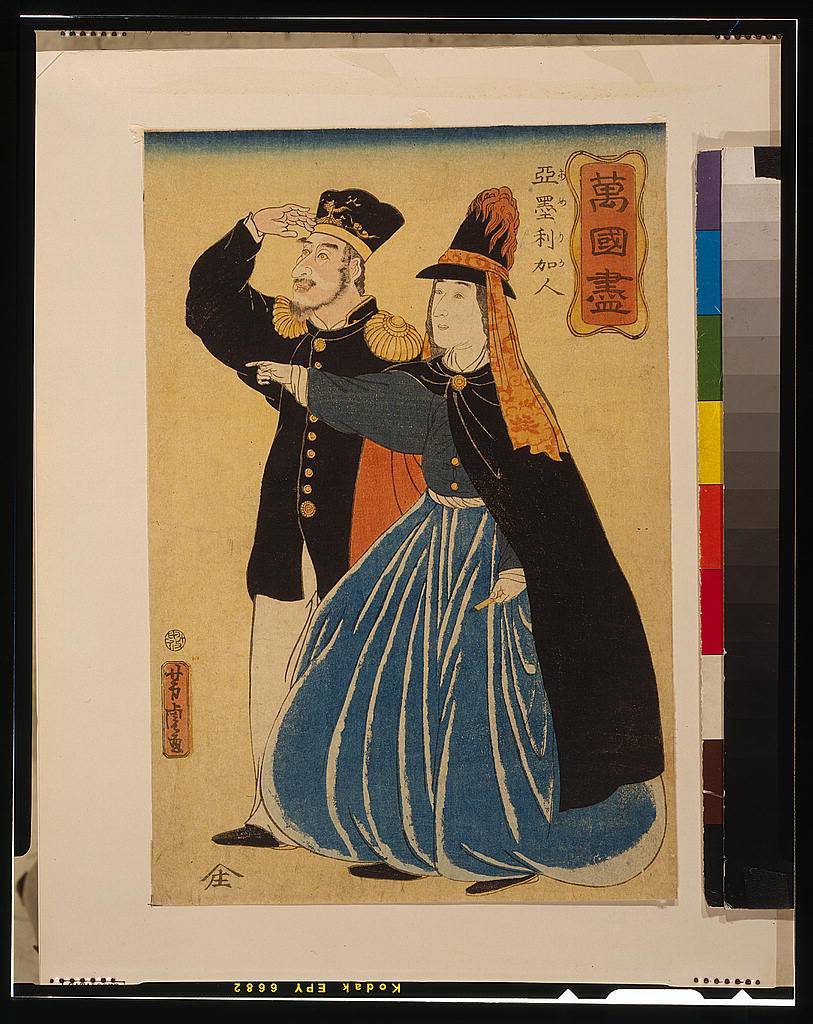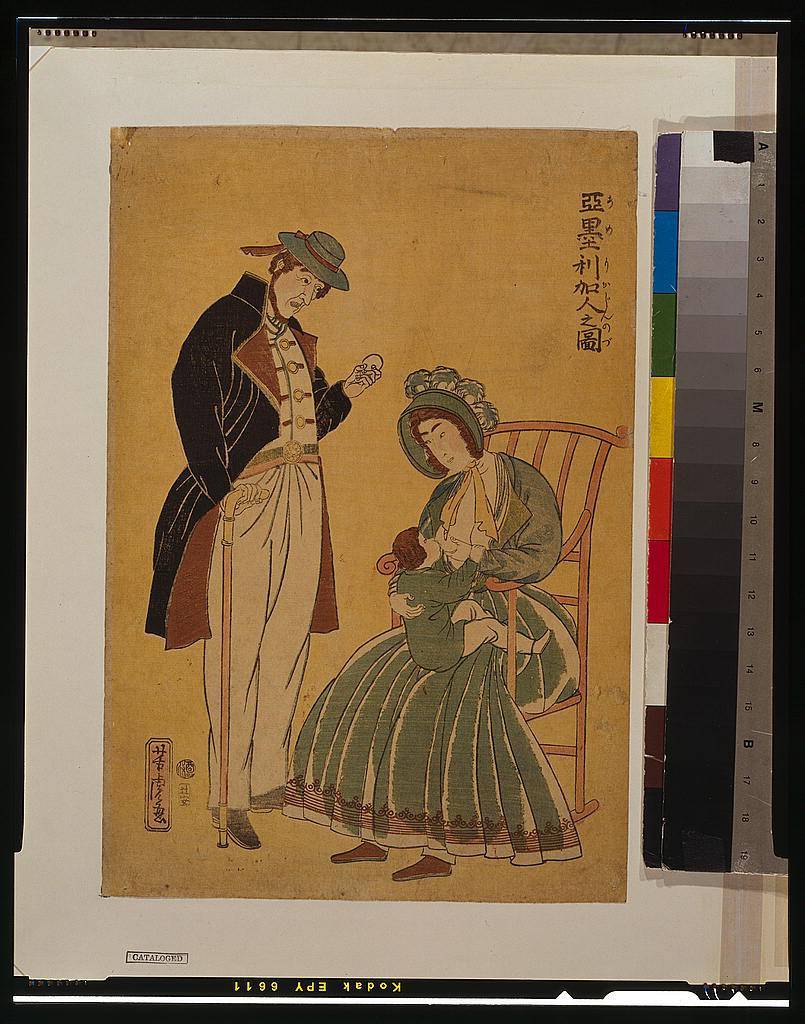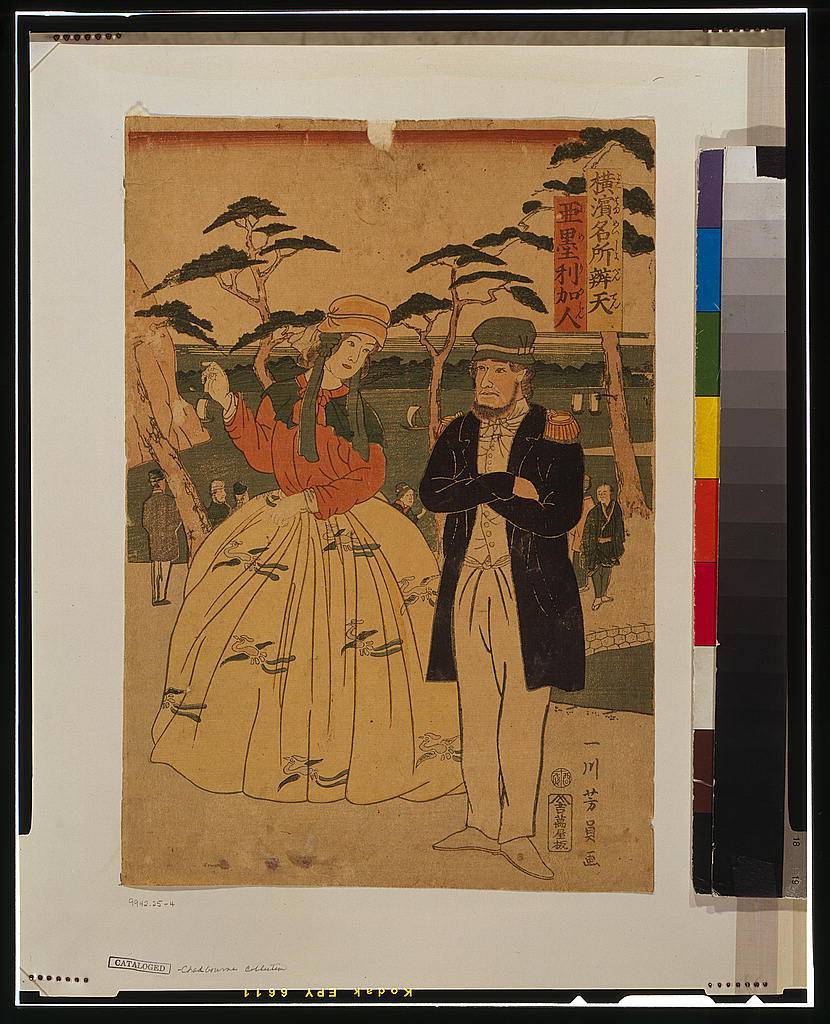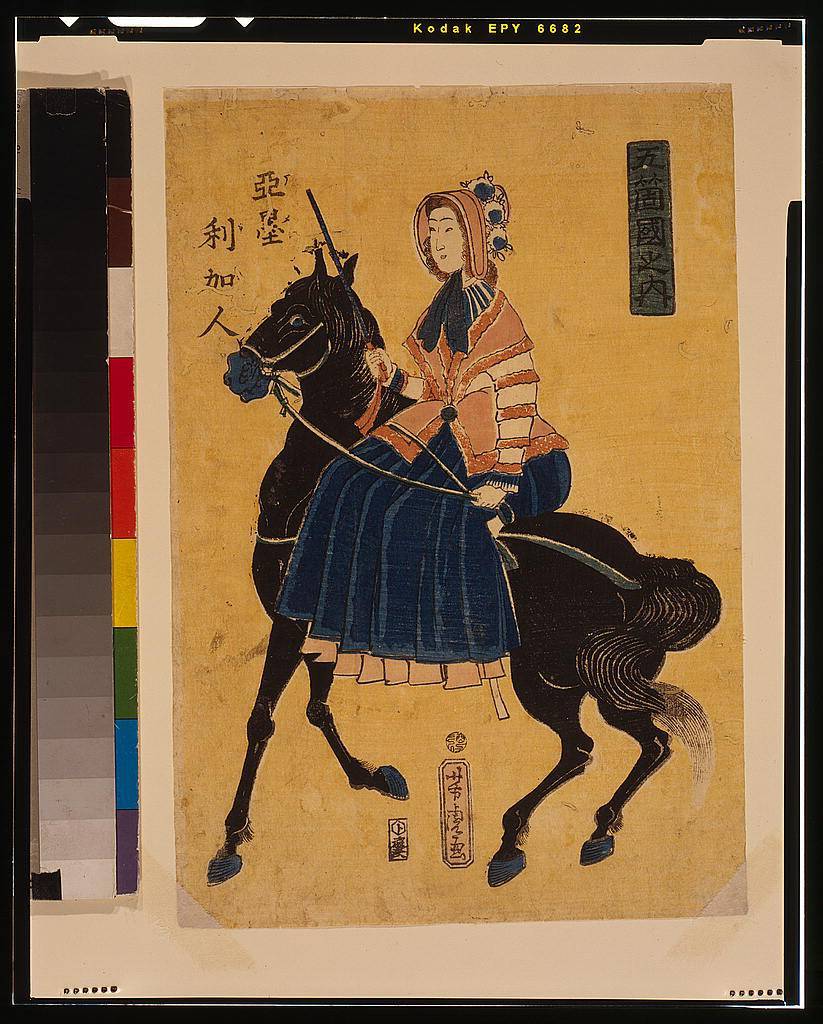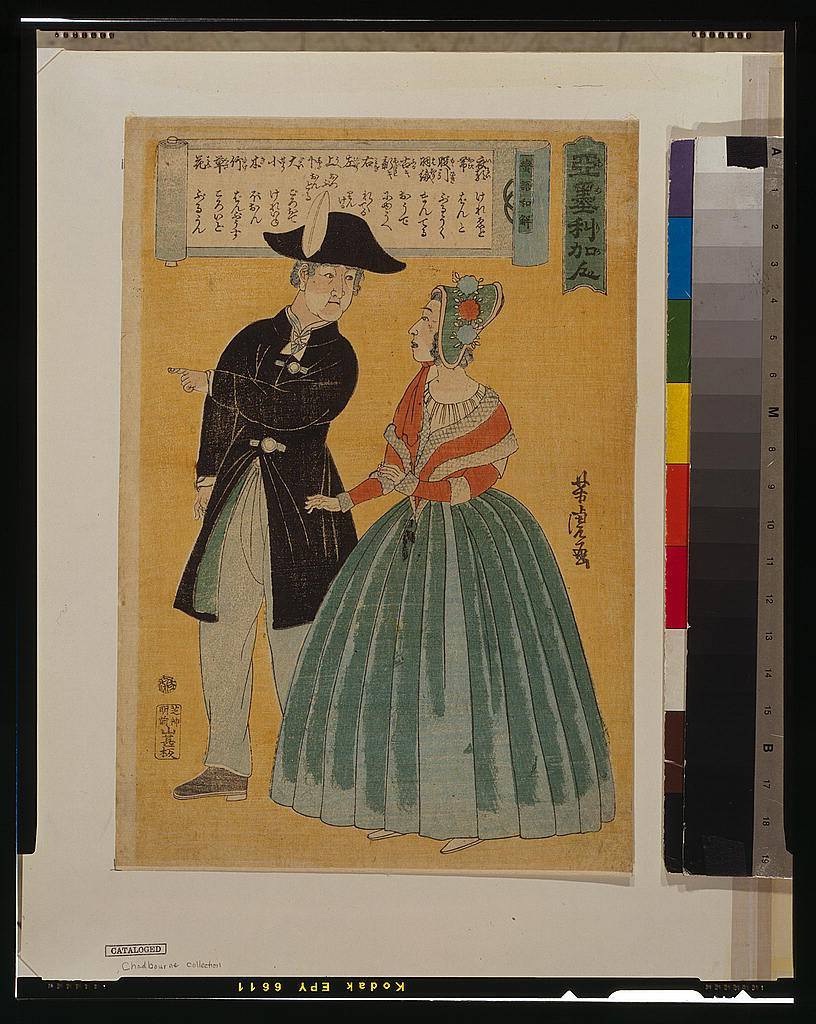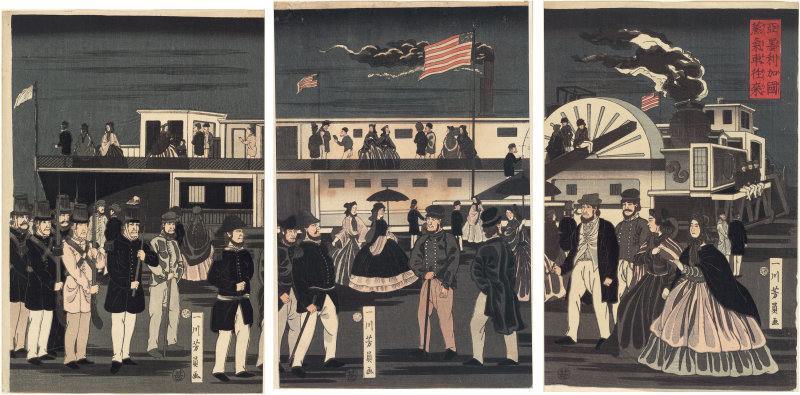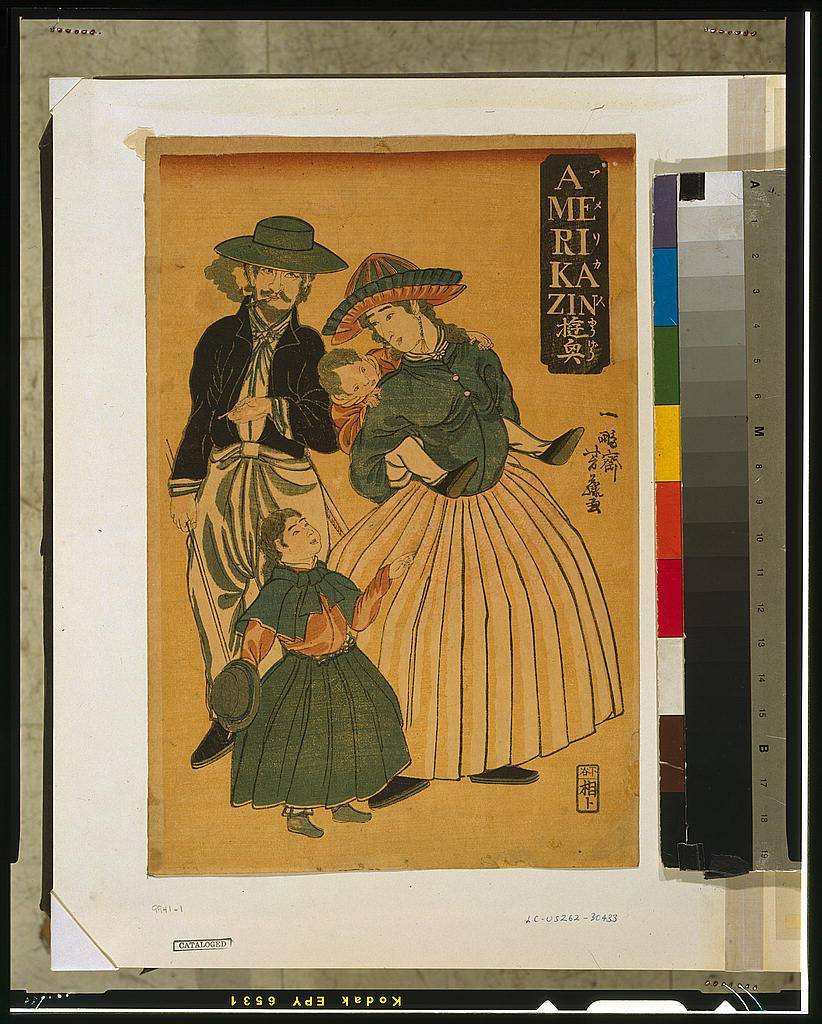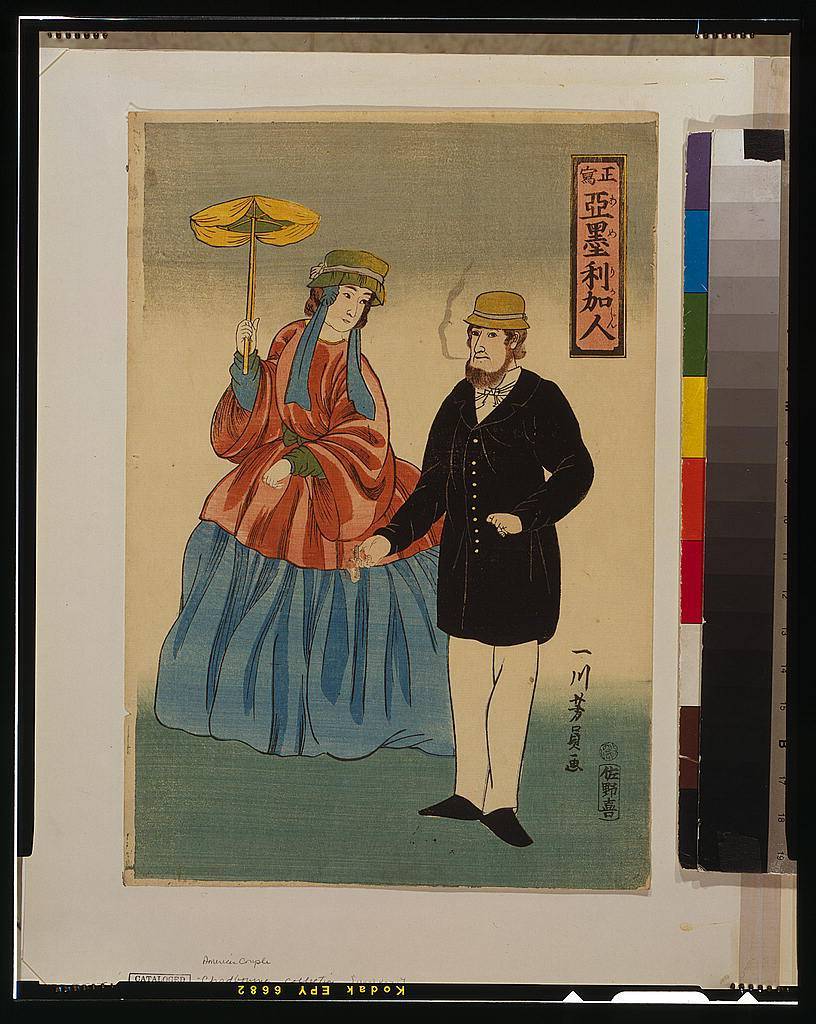In the 1850s U.S. Commodore Matthew C. Perry landed his ships in Japan and set about ending the Tokugawa shogunate’s two hundred years of self-imposed seclusion. Japanese ports opened up to England, France, Russia, Holland, and the United States.
But Japan was no melting pot. Westerners were corralled, unable to roam freely and kept apart from the Japanese.
The Japanese were curious as to what the Westerners looked like. So artists drew them in Yokohama-e (Yokohama pictures) often using borrowed imagery from secondary sources, such as wood engravings found in Western journals and newspapers.
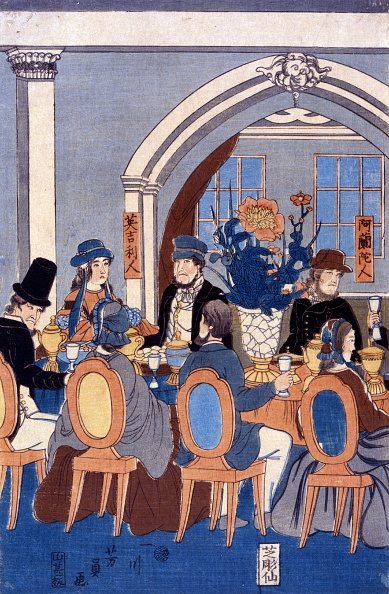
Banquet of five nations (Yokohama club). Artist Yoshikazu Utagawa (1848-1863) Colour woodcut. Japanese diptych print shows a large group of people seated at a long table during a banquet at the Yokohama Club, 1861.
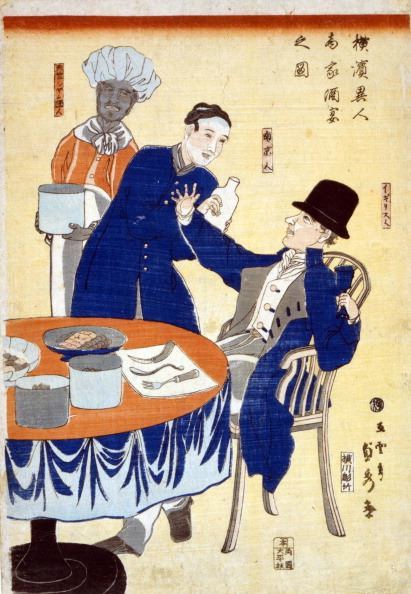
British merchant at banquet in a foreign trading house in Yokohama, Japan, being waited on by a Chinese man, Thai chef in the background, 1861.
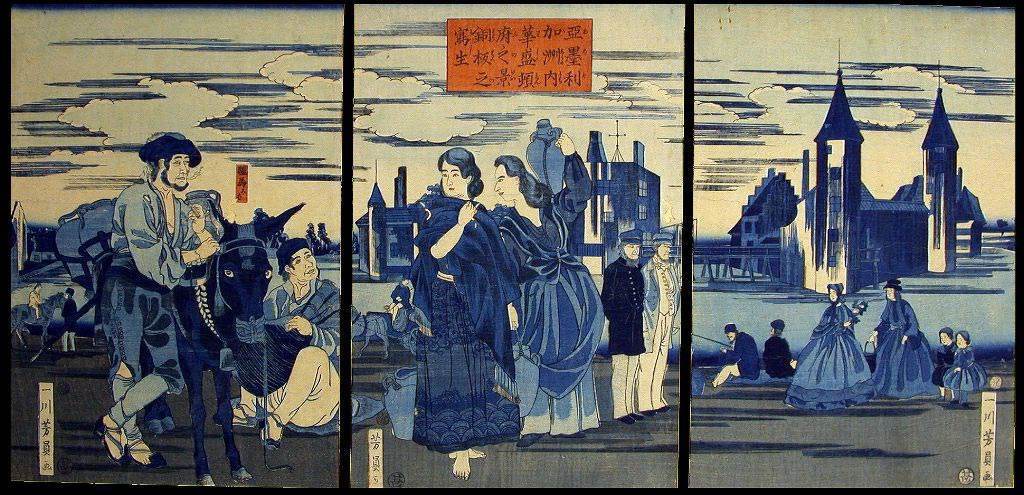
Sketch of a Copperplate Print of the City of Washington (Amerika shu no uchi washintonfu no kei doban no utsushi), 1861
Via: Art Institute of Chicago, Library of Congress
Would you like to support Flashbak?
Please consider making a donation to our site. We don't want to rely on ads to bring you the best of visual culture. You can also support us by signing up to our Mailing List. And you can also follow us on Facebook, Instagram and Twitter. For great art and culture delivered to your door, visit our shop.
